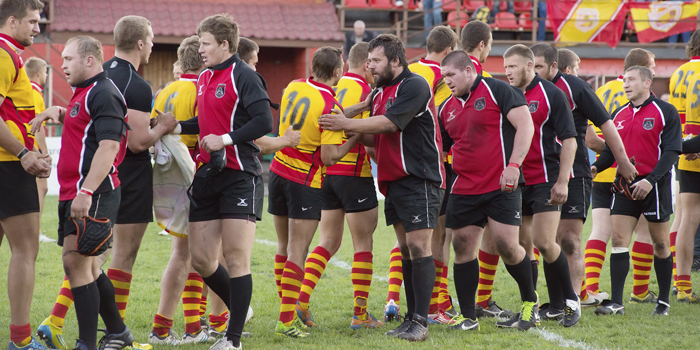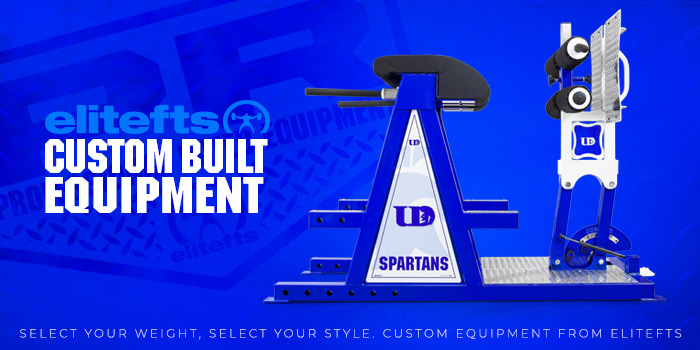
What do you do when you wake up one morning and realize that your best years are behind you and that you are only really waiting on death to take you?
As the wonderful poet Dylan Thomas extols in his famous poem, "Do not go gently into that good night." You can read the entire poem here. In the line, "Rage, rage against the dying of the light," he, of course, was referring to death as that final good night.
I want to discuss another death—the end of a career and the start of retirement.
RECENT: The Eternal Triangle of Sports Weight Training
My father worked in the newspaper industry, starting as a cadet photographer at 14 and retiring at the mandatory age of 65. My brother continues to work for the same company that took him on as a part-time storeman when he was 19. He turns 60 in June, and I have worked in the fitness, sports, or education sector since 1979. They both worked for the same organization for their entire careers, as I have jumped around quite a bit, but longevity seems to be in our blood.
My Best Years
This time last year, I was Head of Performance for the Houston Sabercats in the MLR (USA) competition. I was entering the second year of my contract, and with the struggles of COVID-19, I was also asked to be a de facto team manager. There were many issues to deal with—players arriving into Houston from all points worldwide and having to train in initially household bubbles of two. We then expanded this into larger cohorts as we navigated the rules and regulations of training during a pandemic.
While we did not have success on the playing field, earning the unwanted first wooden spoon of my professional career, I felt incredibly happy with my work as part of the management team. I achieved some personal milestones in developing a rugby-specific weight room with the assistance of Matt Goodwin and Nate Harvey at elitefts.
Life in professional sport is tenuous at best, and at the end of the season, I had already decided not to seek re-appointment—I'd been away from my wife and family for almost eight months. The organization also swung the ax, and the entire coaching staff was replaced, along with many of the players. So I am happy to say I left on my terms but did not know what to expect moving forward.
Today, I train regularly at my local gym, Fitness Canterbury. I continue to try and make a difference in my field with volunteer service on various NSCA committees and the Rugby Special Interest Group (SIG on Facebook).
But, it is not enough.
When working, I was always a part of something bigger than myself. I had 40 players that needed me at various levels of daily engagement. I miss the banter. I miss game day, especially preparing the team table and pre-game warm-ups.
My Previous Normal
On a typical day, I would wake up between 4:30 am to 5:00 am, put the stovetop on for my coffee, and check emails and the news sites that I follow. I would leave for work around 6:45 am. Upon arrival, I would open the weight room, get the post pads out of storage and onto the posts, get water and Gatorade containers filled, and then be ready to start the day after a quick catch-up with medical staff and the availability board for player training status.
Glancing at a week, the program is "fluid" in nature, so all players did not do all sessions. There are also alternatives in place so that we do not react but can adapt relatively seamlessly to any issues as they arise. What is not included in this week's plan are the team meetings—the one-on-one with players, coaching meetings, management meetings, and other planning discussions.
Monday
Session One
Speed (400/600 metres)
| Maximal Velocity | Lateral Speed Agility | Acceleration/Power |
| Build up (Flying) Sprints, Varied Distance Sprints In & Outs Plyos into Sprint Overspeed | Lateral Ladder drills Lateral Skips Marches Prowler® Lateral drills Agility patterns | Tennis Ball Drop Sprint Off the Ground Accelerations Harness & Release Med Ball Throw & Sprint, Prowlers® Sleds |
Session Two
Skills—Catch and Pass and Running Lines
Session Three
Neural or Mechanical Upper Body
Session Four
Skills Conditioning (May do another skills block here after seeing how they are)
- 4 minutes: Alactic Conditioning: 8 x 6 seconds maximal efforts every 30 seconds
- 2 minute: Recovery
- 4 minutes: Skills
- 2 minutes: Recovery
- 4 minutes: Alactic Conditioning: 8 x 6 seconds maximal efforts every 30 seconds
- 2 minutes: Recovery
- 4 minutes: Skills
- 2 minutes: Recovery
- 4 minutes: Conditioning Game
Tuesday
Session One
Combat & Contact Skills
Session Two
Dynamic Warm-up into Lactic/Aerobic Conditioning (3-5km)
| Lactate Focus Examples | Aerobic Focus Examples |
| AB Gilly, Springbok Shuttle, Change of Direction Shuttle, Malcolm's, Scotland Anaerobic, Wales Anaerobic, Solly Bag Drill, Down & Up Bronco Reps | Broken Bronco Reps, Bronco Ladder, Tietjens (80-60-40), Suicides, 100/200 Drill, Coathangers, Diamonds, VO2 Grids, EuroFit, Out & Back Runs |
Session Three
Mechanical Lower Body or Metabolic Circuit or Mechanical Full Body
Wednesday
Session One
Speed (400/600 metres)
| Maximal Velocity | Lateral Speed Agility | Acceleration/Power |
| Build up (Flying) Sprints, Varied Distance Sprints, In & Outs, Plyos into Sprint, Overspeed | Lateral Ladder Drills, Lateral Skips, Marches, Prowler® Lateral Drills, Agility Patterns | Tennis Ball Drop Sprint, Off the Ground Accelerations, Harness & Release, Med Ball Throw & Sprint, Prowlers®, Sleds |
Session Two
Skills—Catch & Pass and Running Lines
Session Three
Neural or Mechanical Upper Body
Session Four
Skills Conditioning
- 4 minutes: Alactic Conditioning: 8 x 6 seconds maximal efforts every 30 seconds
- 2 minuted: Recovery
- 4 minutes: Skills
- 2 minuted: Recovery
- 4 minutes: Conditioning Game
- 2 minutes: Recovery
- 4 minutes: Skills
- 2 minutes: Recovery
- 4 minutes: Conditioning Game
Thursday
Session One
Combat & Contact Skills
Session Two:
Dynamic Warm-up into Lactic/Aerobic Conditioning (3 – 5km)
| Lactate Focus Examples | Aerobic Focus Examples |
| AB Gilly, Springbok Shuttle, Change of Direction Shuttle, Malcolm's, Scotland Anaerobic, Wales Anaerobic, Solly Bag Drill, Down & Up Bronco Reps | Broken Bronco Reps, Bronco Ladder, Tietjens (80-60-40), Suicides, 100/200 drill, Coathangers, Diamonds, VO2 Grids, EuroFit, Out & Back Runs |
Session Three
Mechanical Lower Body or Metabolic Circuit or Mechanical Full Body
Friday
Session One
Speed (250- 400 metres)
| Maximal Velocity | Lateral Speed Agility | Acceleration/Power |
| Build Up (Flying) Sprints, Varied Distance Sprints, In & Outs, Plyos into Sprint, Overspeed | Lateral Ladder Drills, Lateral Skips, Marches, Prowler Lateral Drills, Agility Patterns | Tennis Ball Drop Sprint, Off the Ground Accelerations, Harness & Release, Med Ball Throw & Sprint, Prowlers®, Sleds |
Session Two
Skills – catch & pass, running lines
Session Three
Neural or Mechanical Upper Body
Session Four
Skills Conditioning
- 4 minutes: Alactic Conditioning: 8 x 6 seconds maximal efforts every 30 seconds
- 2 minutes: Recovery
- 4 minutes: Skills
- 2 minutes: Recovery
- 4 minutes: Conditioning Game
- 2 minutes: Recovery
- 4 minutes: Skills
- 2 minutes: Recovery
- 4 minutes: Conditioning Game
Saturday
Session One
Combat & Contact Skills
Session Two
Dynamic Warm-up into Lactic/Aerobic Conditioning (3–5km)
| Lactate Focus examples | Aerobic Focus examples |
| AB Gilly, Springbok Shuttle, Change of Direction Shuttle, Malcolm's, Scotland Anaerobic, Wales Anaerobic, Solly Bag Drill, Down & Up Bronco reps | Broken Bronco reps, Bronco Ladder, Tietjens (80-60-40), Suicides, 100/200 drill, Coathangers, Diamonds, VO2 Grids, EuroFit, Out & Back Runs |
Session Three
Mechanical Lower Body or Metabolic Circuit or Mechanical Full Body
2022 Life Chapter
Fast forward to 2022. Everything has changed in my new reality, aside from waking before dawn, putting my stovetop on, and catching up with correspondence and the news of the day. My hobby has been my career, and my career has been my hobby for all my working life. I fully embraced the Confucian philosophy of "Find a job you enjoy, and you never work a day in your life."
As I write this, I am also trying to integrate the ideas into my life now. If you can find transitional employment between full-time work and retirement, say three days a week or consultancy work, this will greatly assist you through the transitional process. If you need help, seek professional counseling. I have been to a psychologist to assist with coping strategies. According to experts in the field, there are five stages of grief: denial, anger, bargaining, depression, and acceptance. While I do not wish to compare the loss of a job to the loss of a loved one, there are many parallels to look at. This is especially true if you are so invested in what you did to the exclusion of all other hobbies.
As a resource, I have found this website incredibly helpful in coming to terms with my retirement. In the linked article, the author looks at tips to transition and minimize the stress involved in the process. While I am far from accepting that this is the end of my professional sport career, I realize that there is a degree of "ageism" in the hiring process. That said, the role of a head of performance or consultant is not the day-to-day of the strength and conditioning coach. As much as mentally we may still feel in our late 20's, trying to demonstrate everything and take on physical tasks will have our 60-year-old bodies unable to cash those physical cheques. Acceptance is not giving up. It is being self-aware and looking for challenges and opportunities to give back and to grow as part of finding your new purpose.
I will finish with the immortal words of Kenny Rogers:
"You've got to know when to hold 'em
Know when to fold 'em
Know when to walk away
And know when to run
You never count your money
When you're sittin' at the table
There'll be time enough for countin'
When the dealin's done."
Header image credit: lacroix2007 © 123rf.com

Ashley Jones has worked in three professional sports across 30 years and four continents. He was awarded the NSCA's Professional Coach of the Year in 2016. Ashley holds his CSCS (Certified Strength and Conditioning Specialist) since 1988.
Header image credit: lacroix2007 © 123rf.com










Thank you.
Martin.
I just wanted to thank you for all of the articles and amazing insight over the years. As a young strength coach starting out a decade ago, I looked to all of your articles and books as guidance to building my own philosophies and programs. It was always exciting for me to come to the Elitefts website and see new article written by you. As a strength coach for lacrosse players, that play for me as an american football coach, I found all of your shared knowledge extremely relatable, as well as just enjoyable to read. I wish you the best of luck in your next chapter and still hope to read some more articles from you on the past, present and future.
In strength,
Ryan
Simply put; thank you. Thank you for giving us a treasure trove of guidance, information, and insight into to how to make someone better and become better ourselves. The impact you've had will forever be etched in stone. Rugby's better because of you. I know I am and I hope our paths cross one day. It would be a honor to meet you and share a meal.
Scott
I would love to have the chance to sit down and have a blether (Scottish word for chat!) with you all things S&C/training.
Please keep up the awesome work matey, looking forward to your next post. Cheers, John Chisholm (Edinburgh, UK)